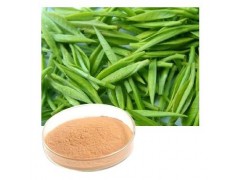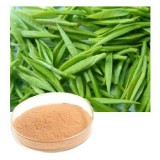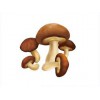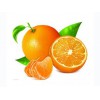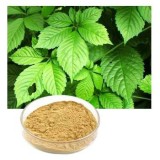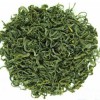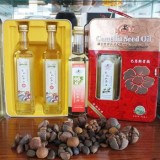Tea Polyphenols,Natural Best Green Tea Extract Powder For Sale
Category: Extract
CAS NO: 989-51-5; 84650-60-2
EC NO: 283-519-7
Molecular Formula: C22H18O11
Molecular Weight: 458.3717
Specification: 50%, 90%, 98%
InChI: InChI=1/C22H18O11/c23-10-5-12(24)11-7-18(33-22(31)9-3-15(27)20(30)16(28)4-9)21(32-17(11)6-10)8-1-13(25)19(29)14(26)2-8/h1-6,18,21,23-30H,7H2/t18-,21-/m1/s1
Synonyms:
EGCG; Green; Tea Extract Powder; Green Tea P.E; Green Tea Extract;
(2R,3R)-5,7-dihydroxy-2-(3,4,5-trihydroxyphenyl)-3,4-dihydro-2H-chromen-3-yl 3,4,5-trihydroxybenzoate;
Green tea extract Polyphenols; Green tee extract; Tea Polyphenols; Tea polyphenol;
Tea Polyphenol (TP98);
Molecular Structure:
"characters": Brown, and yellowish or light green powder
"main ingredients": Tea more phenol (GTP), and coffee alkali, and aromatic oil, and water, and minerals, and pigment, and carbohydrate, and protein, and amino acids, and vitamin,
"detection method": HPLC
Green Tea Polyphenols (GTP) is main components of green tea, about accounted for dry material of 30%, GTP comes from tea scraps (tea late, and tea tablets, and rough old tea or trim leaves) in the extraction. only use food grade ethyl acetate during extraction, thus preserving the GTP original structure, products are light yellow powder. Composition main ingredient catechin, 60%~80% of the total accounted for GTP, which contains epicatechin of 4%~6% (L-EC), 6%~8%, Epigallocatechin gallate (D. L-EC), 10%~15% table of Epigallocatechin gallate (L-EGC), 50%~60% form of Gallic acid resin-Epigallocatechin gallate (L-ECG), and 8%~10% of caffeine.
GTP is rich of phenolic hydroxyl in the structure, active hydrogen available inactivated free radical, which itself was formed by oxidation of free radicals with high stability due to the catechol structure. Therefore, the GTP has a scavenging free radicals and inhibit lipid peroxidation.
Health care function:
"hypolipidemic effect": tea polyphenols can reduce hyperlipemia serum total cholesterol, triglycerides, LDL cholesterol, while restoring and protecting function of vascular endothelial function. Hypolipidemic effect of tea polyphenols is one of the main reasons that tea can make people of obesity weight loss not rebound.
"Antioxidant": tea polyphenols can block lipid peroxidation processes increase the activity of enzymes in the body, so as to resist mutation, cancer results.
"The inhibiting tumor effect": tea polyphenols can inhibit tumor cell DNA synthesis, DNA induces mutation fracture, thus inhibiting the synthesis rate of tumor cells to further inhibit the proliferation of tumor growth.
"Sterilization and detoxification": tea polyphenols can kill botulinum and its spores, inhibit bacterial toxin activity. Of diarrhea, respiratory and skin infections caused by various pathogens have antibacterial properties. Tea Polyphenols induced suppurative infections, Burns, trauma, Staphylococcus aureus and Bacillus variant had a significant inhibitory effect.
"Hangover and liver protection": alcohol-induced liver injury is caused by free radical damage by ethanol, tea polyphenols as a free radical scavenger, inhibited effect of alcohol-induced liver injury.
"Poison": serious environmental pollution has obvious toxic effects on human health, tea polyphenols on adsorption of heavy metal with strong, can produce precipitation and heavy metal to form complex, will help reduce the toxic effects of heavy metals on the human body. In addition, tea polyphenols also has a role in improving liver function and diuresis, thus to the alkaloid poison has a good resistance to hydrolysis.
"Improving the organism immunity": by enhancing the body's immune globulin and total tea polyphenols remain high, stimulating antibody activity changes, so as to improve the overall immune function, and can promote the body's own regulating function.
Food applications:
As a natural antioxidant, tea polyphenols has been widely used in the food industry. China's food additive standards, TP can be used in foods such as fats, cake, ham, the dosage of 0.4g/kg. Method of use is to be dissolved in ethanol, adding a certain amount of citric acid into the solution, and then to spray or add method is used to food.
Other applications:
Excellent additive used as cosmetics and household chemicals: has a strong antibacterial action and the inhibitory effect. So, it can prevent allergic skin disease, skin effect, the skin pigment, a dental caries, tooth plaque, such as periodontitis and bad breath.

